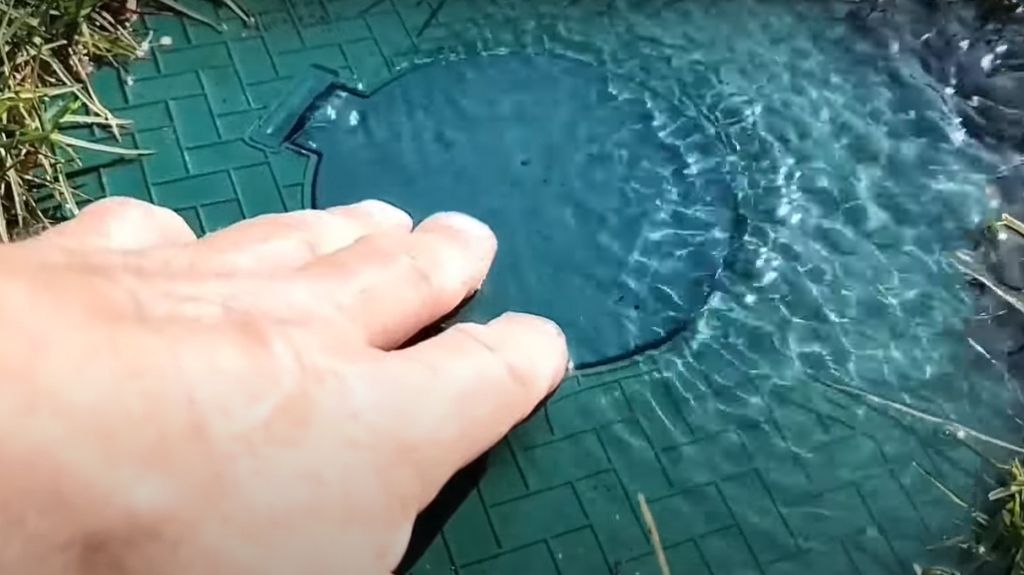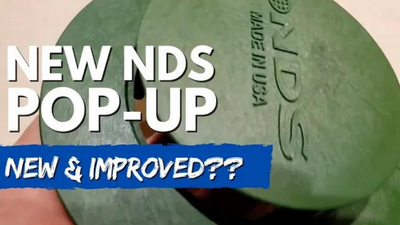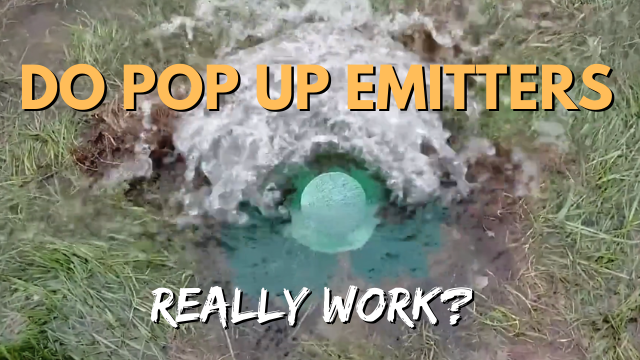When considering drainage solutions, it’s important to choose the best parts for your system that effectively move water away from your foundation. While other contractors may opt for a standard downspout, a pop-up emitter is undoubtedly the most efficient option for carrying that water far away from your home’s foundation. You may be wondering, how does a pop-up emitter work, or when should I use a pop-up emitter for my buried downspout?
When to Use a Pop-Up Emitter
Pop-up Emitters are great for instances like:
- Standing water in your yard due to the soil not draining well
- Homes with roof runoff systems that drain too much water in one area
- Yards with grading issues that impede the natural flow of water away from a home’s foundation
Here in Michigan, yard drainage and standing water are common issues that can be costly if that water damages your home’s foundation or basement. It’s always worth the time and effort to set your system up properly the first time by using pop-up emitters, catch basins, or even installing a full French Drain system. So how does a pop-up emitter work? I’m going to explain that by showing you how our FDM purpose-built pop-up emitter works to resolve yard drainage issues.
How Do I Install a French Drain ? Step by Step Instructions DIY
How Pop-Emitters Work: 3 Stage Technology
To answer the question, how does a pop-up emitter work, I’ve got our Pop-Up Emitter V2.0. It’s the best pop-up emitter on the market.
First, I want to talk about our stage-three technology built into our FDM pop-up. Most people don’t realize that there are three stages to this pop-up.
Pop-Up Emitter Stage One
In stage one, water runs underneath the lid into holes that are at the hinge point. Those holes allow the water to run underneath the turf restrictor plate and soak away. There are cutaways beneath the lid. Stage one is designed for light rain or mist.

Pop-Up Emitter Stage Two
In stage two, the water comes up around the hinge, and it goes around the entire rim. This cleans the pop-up emitter. You can see by the fluid dynamics that this works really well.
Pop-Up Emitter Stage Three
Stage three is when the pop-up emitter is wide open. It’ll move as much water in stage two, as it will in stage three. This design also helps in the wintertime when there’s snow piled up on the pop-up emitter. When the snow melts, the water’s going to run out of the hinge around the lid, and it’s going to melt all the snow.

Notice the flow of water that’s coming out on stage three. The flow of water was the same in our demonstration of stage two.
Get FDM’s pop up emitter drain
Indestructible Pop-Up Can Withstand Mowers
We got a brand-new John Deere, Z930M. This brand-new lawnmower has a nice 25.5 horsepower Kawasaki, and high lift blades. The bottom’s clean and showroom new. We knocked the blade setting all the way down to an inch and a half.

You can see what it did to the turf, and what we were trying to do is we’re trying to suck up that lid and chop it off. The lid is heavy enough to where the lawnmower can’t suck it up, yet water can float into it. The key is the height at which you set the pop-up emitter.
Best Pop-Up Emitter: Crush Test Provides Proof
If the pop-up emitter is left too high, you will chop the lid off. You want to have your pop-up emitter below all the turf grass blades. You want the water to flood the turf restrictor plate, and then soak away into the grass. When it rains really hard, you don’t have to worry. The water will come up and over the turf grass.
The Experts in How Pop-Up Emitters Work and More
French Drain Man is the expert in everything yard drainage-related. From pop-up emitters to buried downspouts and French drains, we’ve got you covered. With over 35 years of experience in the drainage industry, we’ve learned the best ways to install drainage systems with our powerful, purpose-built parts.
To learn DIY tips for yard drainage, subscribe to our YouTube.
For professional drainage service from the experts, give us a call at 248-505-3065!







